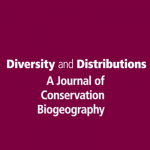Profile
Coral reefs are one of the most iconic and diverse ecosystems in the world. Yet, they are largely threatened by current human activities.
Slightly deeper, reside other incredibly diverse ecosystems, called MCEs (30-150 m). They occupy two thirds of the total depth range of zooxanthellate corals and provide many of the same ecosystem services found in shallow coral reefs.
MCEs study is still at its infancy, which is mostly due to logistical difficulties and safety issues in accessing them. MCEs research has increased exponentially, especially with enhanced technology capacities and after the Deep Reef Refugia Hypothesis formulation by Glynn in 1996. This hypothesis postulates that deeper reefs could provide a spatial refuge and serve as a source of larvae for the recovery of shallow-water coral reefs. On top of that, these ecosystems host an incredible biodiversity, where many of the species inhabiting them are yet undiscovered. However, there is a growing evidence that MCEs are not immune to anthropogenic impacts.
Thus, all these reasons show the importance of studying mesophotic reefs, to better understand them and finally protect them in today’s global context.
Mesophotic coral ecosystems as truly amazing, hosting so much diversity; yet they are already threatened by human activities, revealing the urgent need to study and protect these ecosystems which have still to reveal their secrets.
Biography
My Project
Other interests
I am interested in all tropical benthic species, with a particular interest in the ones populating mesophotic reefs, including scleractinians, soft corals, gorgonians and sponges. I am using a remotely operated vehicle (ROV) and a drop-camera system to undergo my research, collecting both videos and coral samples.
My Publications

Light and Temperature Drive the Distribution of Mesophotic Benthic Communities in the Central Indian Ocean
Diaz, C., Howell, K.L., Robinson, E., Hosegood, P., Bolton, A., Ganderton, P., Arber, P., Attrill, M.J., Foster, N.L. (2023) Light and temperature drive the distribution of mesophotic benthic communities in the Central Indian Ocean. Diversity and Distributions.

Mesophotic Coral Bleaching Associated with Changes in Thermocline Depth
Diaz, C., Foster, N.L., Attrill, M.J., Bolton, A., Ganderton, P., Howell, K.L., Robinson, E., Hosegood, P. (2023). Mesophotic coral bleaching associated with changes in thermocline depth. Nature Communications.

A Review of a Decade of Lessons From One of the World’s Largest MPAs: Conservation Gains and Key Challenges
Hays, G.C., Koldewey, H.J., Andrzejaczek, S., Attrill, M.J., Barley, S., Bayley, D.T.I., Benkwitt, C.E., Block, B., Schallert, R.J., Carlisle, A., Carr, P., Chapple, T.K., Collins, C., Diaz, C., Dunn, N., Dunbar, R.B., Eager, D.S., Engel, J., Embling, C.B., Esteban, N., Ferretti, F., Foster, N.L., Freeman, R., Gollock, M., Graham, N.A.J., Harris, J.L., Head, C.E.I, Hosegood, P., Howell, K.L., Hussey, N.E., Jacoby, D.M.P., Jones, R., Pilly, J.S., Lange, I.D., Letessier, T.B., Levy, E., Lindhart, M., McDevitt-Irwin, J.M., Meekan, M., Meeuwig, J.J., Micheli, F., Mogg, A., Mortimer, J.A., Mucciarone, D.A., Nicoll, M.A., Nuno, A., Perry, C., Preston, S.G., Rattray, A.J., Robinson, E., Roche, R., Schiele, M., Sheehan, E.V., Sheppard, A., Sheppard, C., Smith, A.L., Soule, B., Spalding, M., Stevens, G.M.W., Steyaert, M., Stiffel, S., Taylor, B.M., Tickler, D., Trevail, A.M., Trueba, P., Turner, J., Votier, S., Wilson, B., Williams, G., Williamson, B., Williamson, M.J., Wood, H. and Curnick, D.J. (2020) A review of a decade of lessons from one of the world’s largest MPAs: conservation gains and key challenges. Marine Biology.
